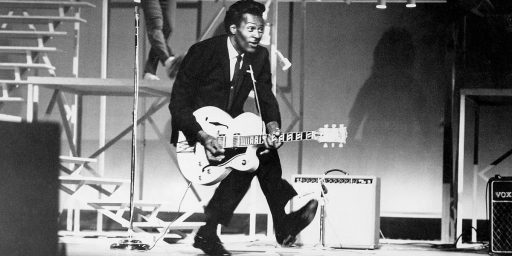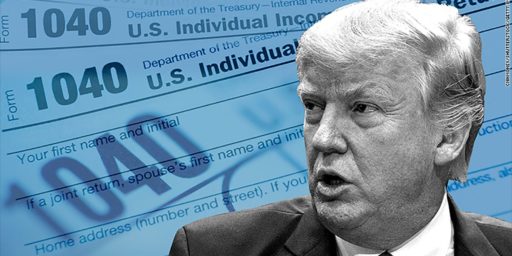Banning Service Fees
California is leading the way on a wildly popular initiative.

WaPo (“As California bans service fees, restaurants brace for impact“):
Diners really dislike fees at restaurants, those amounts that go by various names that are tacked onto end-of-meal bills. The phenomenon has been proliferating in the last few years. In California, though, they are about to go away.
The state this week issued guidance for a law, which takes effect in July, that bans such fees in a wide range of settings, including hotels, concert venues and restaurants. The measure, which is aimed at making it clearer up front to consumers what things cost, is particularly unsettling to restaurants, some of which had thought they might be exempt.
“Our price transparency law is about clear and honest communication with consumers, so consumers can make the financial choices that are best for them and their families,” California Attorney General Rob Bonta said this week in a news release. “The law is simple: the price you see is the price you pay.”
Once the law takes effect July 1, it will be illegal for businesses to advertise or list a price that does not reflect any fees or additional charges that customers must pay. That means restaurants will not be able to impose the kinds of separate, mandatory add-ons that have been cropping up under different monikers — a “service fee,” perhaps, or a “health and wellness fee” — that they have been using to cover labor or food costs without directly raising their menu prices. The law does not affect tips, which aren’t covered since they are technically voluntary.
“If a restaurant charges a mandatory fee, it must be included in the displayed price,” the guidance states. “Under the law, a restaurant cannot charge an additional surcharge on top of the price listed.”
And while lawmakers have insisted that the law does not dictate prices, some restaurants are saying they will now have to charge more — and some say their businesses might not survive. “It could put people out of business immediately,” Golden Gate Restaurant Association President Laurie Thomas told Eater San Francisco.
And, no, it’s not just California. The link early in the article is to a February report titled “Service fees are roiling D.C. restaurants. Here’s what you need to know.”
In early 2024, a single issue has roiled the D.C. dining scene: service fees. The practice of tacking on extra charges — beyond stated menu prices and standard, voluntary tips — has divided restaurant staff, frustrated customers and prompted lawsuits by an advocacy group that’s intent on stamping out a business method it says can be deceptive.
But restaurateurs who’ve introduced the fees say they did so to stay afloat in an industry with notoriously thin margins. Some assert the funds are used to offset the cost of higher wages they must pay workers as a result of Initiative 82, which was enacted last year to increase the paychecks of D.C.’s tipped restaurant employees. Other owners say the fees are used to help pay for workers’ health care. And some restaurants introduced service fees during the height of the pandemic. Since then, the fees stuck around.
Customers, meanwhile, are left surprised by bills that can be 10 to 15 percent higher than what they were expecting, with charges they don’t understand. Employees are split on the issue, and sometimes confused about whether the fees are helping their personal bottom lines. The issue has proved exceedingly complicated, even for policy professionals tasked with helping to regulate the industry.
The notion that a business can impose a fee on customers after the service has been delivered is simply bizarre. Even if the fee is mentioned somewhere on the menu, most customers wouldn’t notice. Restauranteurs are essentially committing fraud here and are somehow shocked that they’ll have to stop.
The explanation given is risible:
Jason Berry, a co-owner of Knead Restaurant Group,which Travelers United sued, said his servers reported decreased tips after Knead implemented its Initiative 82 surcharge, and as a result, the group was already in the process of removing the surcharge when it was informed of the lawsuit.
Berry wants diners to know that it’s not just the servers who receive tips; it’s also the bartenders, hosts, bussers, barbacks and more. He estimated that between 65 percent and 70 percent of his staff receive tips. At the same time, he said, restaurant profit margins are notoriously slim, putting pressure on restaurateurs to figure out how to stay in the black.
“A good restaurant in America has a 10 percent profit margin,” Berry said. “People think that this restaurant is so busy, it makes so much money. … They’re busy when you’d expect them to be busy, and they’re slow when you’d expect them to be slow, but we’re paying rent and electric and gas and water all day every day.”
All businesses have to pay their workers as well as cover rent, utilities, supplies, and the like. That restaurants would somehow be exempt from that makes no sense. If customers won’t willingly pay what it costs to cover that and make a reasonable profit without subterfuge, then the restaurant should go out of business.
It’s already weird enough that restaurants have long been permitted to shift a significant part of the cost of paying their workers into an essentially compulsory “tipping” culture, with customers expected to add 20 percent to their bills to pay the waitstaff. While there are good arguments for this, owing to an inherent principal-agent problem unique to the service industry, it’s really a relic of a bygone era that has stuck around. But at least Americans are accustomed to this practice and can factor it into their dining decisions.
Regardless, this sort of regulation should be popular on a bipartisan basis. President Biden has been promising to end “junk fees” for a couple of years now and has made some small inroads. To the extent has has the ability to do so via executive order, it would be extremely good election year politics.






In San Diego all of the major restaurant ownership groups have little disclaimers on their menu “4% service fee/living wage fee added to all checks, this is not a tip”.
I view it as primarily a political statement – basically, they resent having to pay employees a fair wage, so they add it as a separate line item on customer checks in an attempt to create political opposition to the fair wage laws.
It’s cynical and, thankfully, will be illegal soon.
We come across the “kitchen staff” fee pretty regularly in higher end restaurants, particularly in Boston and it always makes me grumble under my breath, “just pay your effin staff a living wage and price the menu accordingly.
Though the fee that irked me the most for audacity was a concert venue that attached a $5 “handling fee,” not just on the ticket order, but on each individual ticket. I decided I didn’t need to go to that venue.
I find the complaint that “we’ll have to charge more” rather infuriating. You’re already charging more. The added fees are a charge, not something to decorate the bill so it looks nice.
There was a similar situation in Mexico in the late 80s. We pay a value added tax of 16% (it started at 10, then increased twice). At its inception, when it replaced a 4% sales tax, items in all stores were priced prior to the tax. Even knowing all items (except food and medicine) are charged the tax, it was hard to know exactly how much you’d be paying per item.
So the law mandated the price be displayed tax included. This is now so for all items and services, including restaurants (they do charge the VAT even if they sell food, because food preparation is a service).
Unsurprisingly, most people liked this. Now you knew the full price for a dress or a spatula, and didn’t have to pause to try to add the tax in your head (late 80s few people carried calculators in their pockets).
IMO, this practice should be followed everywhere. That is, all fees should reflect directly on the price, but so should all taxes. And in the case of air fares and hotels, all taxes, airline fees, and mandatory government fees as well.
Like similar discussions (for example hidden air travel fees and taxes, like in this this OTB post about “Price Transparency”, I agree that the cost should be up front. I’d probably include all taxes, even though that’s not standard practice. Business owners would still be free to break it down in the final bill if they wanted to explain/complain about taxes and credit card fees and yes, having to pay their actual employees a living wage (shouldn’t be a complaint, but let them vent).
This is a little tangential, but there have been some fees associated with my kids’ schooling or other government functions where you’d get charged a convenience fee for paying via the Internet, vs. mailing a check. Wtf? It’s got to take way more resources to have a person open an envelope and process a check compared to simply having money show up in your account (yes, I understand they’d have to pay some service to secure the transaction, but still …).
@Kathy: You beat me to it. I concur!
The link about the Principal-Agent problem was super-interesting, and led me to a deeper dive into articles by that economist. I never comment, but I’ve been reading here for a long time, and I’m always impressed by the writing skills and breadth of knowledge demonstrated by all the contributors. Thanks for sharing your views and opinions, and next time I have some spare cash I will be sure to show my appreciation economically.
Figuring out what “a 10% charge will be added for parties of 6 or more” would add to the check has never been much of a problem for me. Partially because I frequently dine alone (and usually at more plebian places) so I’m not paying the surcharge, but also because I’m good at estimating. Restaurants having to pay living wages (well, rough approximations of them) up front is going to change the industry markedly.
Fun times.
@kathy
Spot on. They’re not complaining they have to raise what the customer is paying, they’re complaining they have to raise the list price the customer sees.
Yeah, it’s bad behavior but I can understand the incentives. Restaurants don’t want to raise prices if their competitors are not and charging this hidden fee instead.
Banning the practice will force everyone to do what they should be doing, which is raise prices.
I would prefer to get rid of tipping and pay staff like normal employees like the rest of the world too, but that ship has sailed.
As for tipping, I agree restaurants, and for that matter bars, Uber, hotels, cab companies, etc., should pay a living wage instead of outsourcing compensation to their customers.
The thing is tipping is hard to eradicate once it settles in. Take restaurants. Many have attempted to end tipping in their premises, but usually they revert.
I don’t know all the details, but incentives matter a lot. A server might prefer to work when it’s busiest, as they serve more people and get more in tips (on average), than if they worked at slow times with fewer people and less money in tips.
If tipping is done away with, then the preference would be for working at slow times. As Tom Clancy might have put it: serving food, taking orders, or sitting on my ass, I get paid the same.
All this can cause staff management issues.
Then, too, people are conditioned to leave a tip. I’ve read that in no-tipping places, customers would insist on leaving tips anyway (one assumes in cash).
@Franklin: I don’t know the specifics for the fees you mention, but here in California paying for a government fee online vs a check there is no difference in price. Unless you are paying with a credit card. In which case the state passes the merchant service fee onto you. But if you pay using a debit from a checking account, no extra cost.
@AMW:
Hey, just wanted to say thank you for that feedback. It’s really appreciated!
@Franklin: “Convenience fees” are not just in government (although the state I lived until I moved in didn’t charge them, it added a processing fee no matter how you pay) as both my previous and current landlords require payment online and the current one adds a charge even for ACH payments.* I see your argument okay but would counter that the person opening the envelope and processing the check is a fixed “cost of doing business” from the outset–and therefore, should be included in the calculation of the base price for the service–whereas the (variable and changing in some cases) processing fee from the credit/debit card company is an additional/(purportedly) unplanned cost that warrants the attempt to recover (hopefully, but not always–alas, at a modest profit).
*I still chose the ACH payment because the added charge was lowest. Watch the pennies; the dollars can fend for themselves.
@Tony W:
I hope that those owners will simply update the complaint. I like knowing where the owners are complete shitheads, as it tells me where to never go again.
The article frequently refers to “notoriously thin” profit margins. If it is such a bad business, why are there so many restaurants? Half the food dollars in the US are spent outside the home, so clearly there’s a demand–but that still makes me wonder why owners make a decision to pursue a business that they denigrate as unprofitable? I just do not understand this sector of the economy, I guess. I do have a lot of experience with food service from my time as a logistics officer in the Army, but there the model is entirely different–more or less captive audience, heavy subsidies from the government. I know many restaurants go out of business if staff changes or building rents rise, and we’ve all seen lots of franchise restaurant locations close (and in St Louis, turn into phone or cannabis stores).
@Mike Burke:
I would imagine that the various fast food chains and the like are doing fine, with low but predictable profits year in and year out. But independently-owned, sitdown restaurants are notoriously likely to fail. It’s rare for one to last a decade or more.
Here’s a 2014 Business Insider piece on the subject:
According to a frequently c
I think a lot of people think they know how to cook, so they can operate a restaurant.